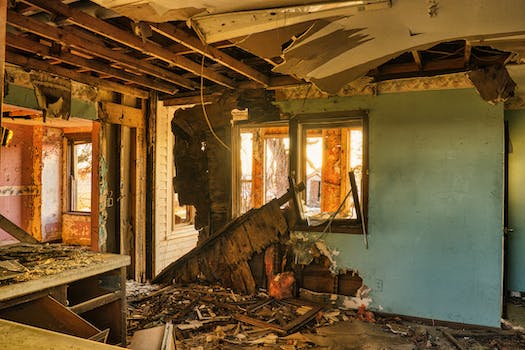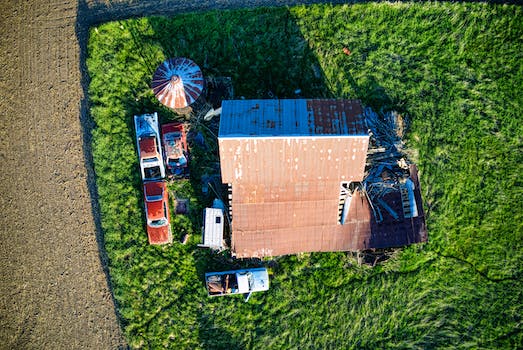Devastating news from Guatemala as the volcano eruption wreaks havoc. Praying for the safety and well-being of everyone affected. Stay strong Guatemala.
Guatemala, a volcanic country located in Central America, recently experienced a devastating eruption of one of its most active volcanoes. This catastrophic event took place in the southern part of the country, where the Volcán de Fuego, or “Volcano of Fire,” resides. On a fateful day, the volcano erupted with unprecedented force, spewing a massive column of ash, rocks, and gas into the sky. The eruption not only posed immediate dangers to the surrounding communities but also triggered secondary hazards, such as pyroclastic flows and lahars. This natural disaster has caused significant loss of life and extensive damage to the region, prompting widespread efforts for rescue, evacuation, and support. The impact of this volcanic eruption will undoubtedly have long-lasting effects on the affected communities and the country as a whole.

Causes and Impact of the Guatemala Volcano Eruption
In recent years, Guatemala has experienced one of the most devastating natural disasters in its history – the eruption of the volcano. This catastrophic event had profound causes and left a lasting impact on the country. In this article, we will delve into the reasons behind the eruption and examine the consequences it had on Guatemala and its people.
One of the main causes of the Guatemala volcano eruption was the tectonic activity in the region. Guatemala is located in the Pacific Ring of Fire, which is an area known for its high volcanic and seismic activity. The Cocos Plate, which is an oceanic tectonic plate, is subducting beneath the Caribbean Plate, creating a complex and unstable geological environment. This friction and collision between the plates eventually led to the buildup of pressure and the eruption of the volcano.
It is important to highlight the significant impact that the Guatemala volcano eruption had on the environment. The ash and gases released during the eruption resulted in widespread pollution and poor air quality. This had detrimental effects on both human health and the ecosystem. Additionally, the volcanic ash blanketed the surrounding areas, causing damage to crops, vegetation, and infrastructure. The fertile soil found in the region was also affected, leading to long-term consequences for agriculture and food production.
The eruption had an immediate impact on the local population. Thousands of people were forced to evacuate their homes and seek shelter in temporary camps. The loss of homes and livelihoods had a devastating effect on the affected communities, many of whom were already living in vulnerable conditions. The government and humanitarian organizations worked tirelessly to provide assistance and support to those affected, but the road to recovery was long and challenging.
Furthermore, the eruption highlighted the importance of disaster preparedness and response. The Guatemalan government, along with international organizations, learned valuable lessons from this event and implemented measures to improve their disaster management systems. This included enhancing early warning systems, designating safe evacuation zones, and establishing robust emergency response protocols. By doing so, they aimed to reduce the impact of future volcanic eruptions and protect the lives and livelihoods of their citizens.
In conclusion, the eruption of the Guatemala volcano had significant causes and a lasting impact on the country. The tectonic activity in the region, along with the complex geological environment, led to the buildup of pressure and the eruption. The consequences were far-reaching, affecting the environment, the economy, and the lives of the local population. However, the event also served as a wake-up call, highlighting the importance of disaster preparedness and response. By learning from this experience, Guatemala is better equipped to face future challenges and protect its people.

Evacuations and Rescue Efforts in the Wake of Guatemala Volcano Eruption
In the aftermath of the devastating eruption of the Guatemala Volcano, authorities are working tirelessly to organize evacuations and rescue operations to save as many lives as possible. The eruption, which occurred on [date], has caused widespread destruction and displaced thousands of people.
One of the primary concerns in such situations is the safety of residents in nearby villages and towns. As the volcanic activity intensifies, experts are closely monitoring the situation to determine the extent of the danger and plan evacuation routes accordingly. Authorities are using every available resource to ensure the timely and safe evacuation of affected individuals.
Rescue efforts are also underway to locate and assist those who may be trapped or injured due to the eruption. Trained search and rescue teams are combing through the affected areas, aided by local volunteers and emergency responders. Their priority is to provide medical attention and transport the injured to nearby hospitals for treatment.
A coordinated response involving government agencies, humanitarian organizations, and international partners is vital during times of crisis. The focus is not only on immediate relief efforts but also on long-term support for those affected by the disaster. Temporary shelters have been set up to provide a safe haven for displaced individuals, while efforts are underway to provide them with food, water, and essential supplies.
It is important to note that during evacuation and rescue operations, following safety protocols is of utmost importance. The public is urged to cooperate with authorities and follow their instructions for their own safety and the safety of others. It is also crucial to stay informed through official channels and reliable news sources to receive accurate updates and guidance.
- Stay tuned to local radio or television stations for updates on evacuation orders and rescue efforts.
- Prepare an emergency kit with essential items such as water, non-perishable food, flashlights, batteries, and a first aid kit.
- If instructed to evacuate, follow the designated evacuation routes and do not attempt to return to the affected area until it is deemed safe to do so.
In conclusion, the eruption of the Guatemala Volcano has triggered extensive evacuations and rescue efforts to safeguard the lives of the affected individuals. The prompt response and collaboration of various agencies and organizations are crucial in minimizing the impact of this disaster. It is a reminder of the importance of preparedness, resilience, and unity in the face of natural calamities.

Guatemala Volcano Eruption: Destruction and Rebuilding
Guatemala, a country located in Central America, has recently experienced a devastating volcanic eruption. The eruption, which occurred on [date], has caused immense destruction and loss of life. In this article, we will explore the aftermath of the eruption and the efforts being made to rebuild the affected areas.
The volcano, named [volcano name], erupted with tremendous force, spewing ash, rocks, and lava into the surrounding areas. The eruption took everyone by surprise, leaving little time for evacuation or preparedness. The impact was felt not only in the immediate vicinity of the volcano but also in neighboring towns and villages.
The destruction caused by the eruption is unprecedented. Entire villages have been engulfed by lava flows, leaving nothing but a trail of destruction in their wake. Homes, schools, and businesses have been reduced to rubble, displacing thousands of residents. The landscape has been completely transformed, with once lush greenery now replaced by gray ash.
The loss of life has been heart-wrenching. Many residents were unable to escape the path of the lava flows, resulting in numerous fatalities. The exact number of casualties is still unknown, as rescue and recovery efforts continue. It is a time of mourning for the affected communities, as they come to terms with the devastating loss.
In the face of such adversity, the Guatemalan government and international organizations have mobilized to support the affected areas. Emergency response teams have been deployed to provide immediate assistance, including medical aid, food, and shelter. The focus is on ensuring the safety and well-being of the survivors.
As the immediate relief efforts continue, attention is also turning towards long-term rebuilding and recovery. The affected communities will need extensive support to rebuild their lives. This includes reconstructing homes, schools, and infrastructure, as well as providing psychological support for those who have experienced trauma.
One of the challenges faced in the rebuilding process is the unpredictable nature of volcanic activity. While efforts are being made to mitigate the risks and establish early warning systems, there is always a level of uncertainty. Balancing the need for safety with the desire to rebuild and return to normalcy is a delicate task.
The Role of Communities
In the midst of this tragedy, the resilience and strength of the Guatemalan people shine through. Communities have come together to support one another, offering help and comfort to those in need. They have shown incredible bravery and determination in the face of immense loss.
It is this spirit that will drive the rebuilding process. With support from the government, international organizations, and their fellow citizens, the affected communities will slowly but surely start to rebuild their lives. While it may take time, the bonds of community and the innate resourcefulness of the people will prevail.
Conclusion
The Guatemala volcano eruption has caused unprecedented destruction and loss of life. However, it has also brought out the best in humanity, with communities rallying together to support one another. The long road to rebuilding will be challenging, but with determination and support, Guatemala will rise from the ashes and emerge stronger than ever.
Understanding the Science Behind the Guatemala Volcano Eruption
Guatemala, a country known for its stunning natural landscapes, experienced a devastating volcanic eruption on [insert date here]. This unexpected event left communities in shock and sent a wave of destruction across the region. In order to comprehend the magnitude of this disaster, it is essential to delve into the science behind volcanic eruptions.
Volcanoes, such as the one in Guatemala, are geological formations created by the accumulation of molten rock, debris, and gases beneath the Earth’s surface. When pressure builds up within these pockets of magma, it eventually forces its way to the surface, resulting in an eruption.
There are several factors that contribute to the intensity and frequency of volcanic eruptions. The primary factor is the composition of the magma itself. Magma is a mixture of molten rock, gases, and solid particles. The more viscous the magma, the greater the pressure buildup, leading to explosive eruptions. In contrast, less viscous magma allows gases to escape more easily and results in less violent eruptions.
Another crucial factor is the presence of volatile gases, such as water vapor and carbon dioxide, within the magma. As the magma rises to the surface, the decrease in pressure causes these gases to expand rapidly, leading to explosive eruptions that can launch volcanic ash, rocks, and pyroclastic flows into the air.
Volcanic eruptions can also produce secondary hazards such as lahars, which are mudflows consisting of volcanic ash and water. These lahars can travel at high speeds, engulfing everything in their path and causing significant damage to infrastructure and ecosystems.
Scientists diligently monitor volcanic activity using various instruments and techniques. Seismographs record the seismic waves generated by the movement of magma and provide valuable insight into volcanic unrest. Gas analyzers measure the composition of volcanic gases and can detect changes that may indicate an impending eruption.
Understanding the science behind volcanic eruptions is key to predicting and mitigating the associated risks. By studying the characteristics of different volcanoes, scientists can develop models to forecast future eruptions and help communities prepare for potential disasters.
- Importance of Early Warning Systems
- The Role of Volcanic Monitoring
- Impacts on the Environment and Human Health
- Preparing for Volcanic Eruptions: Community Resilience
It is vital for governments, communities, and individuals to have comprehensive disaster management plans in place to minimize the impact of volcanic eruptions. These plans should include early warning systems, evacuation strategies, and measures to ensure the safety and well-being of affected populations.
In conclusion, the eruption of the Guatemala volcano serves as a stark reminder of the power and unpredictable nature of these geological phenomena. By understanding the science behind volcanic eruptions and implementing appropriate measures, we can work towards minimizing the devastation caused by these natural disasters and safeguarding the lives and livelihoods of those living in volcanic regions.
Safety Precautions and Preparedness for Future Volcano Eruptions in Guatemala
When it comes to living near active volcanoes, safety should always be a top priority. Guatemala, known for its beautiful landscapes and rich volcanic activity, requires its residents and visitors to be well-prepared and take necessary precautions to mitigate the risks associated with volcano eruptions.
One of the key elements in ensuring the safety of individuals is education. The government should carry out extensive public awareness campaigns to inform the population about the potential dangers of living near volcanoes and the necessary steps they should take to protect themselves. These campaigns should be targeted towards both urban and rural areas, ensuring that everyone is aware of the risks and preventive measures.
It is crucial to establish emergency protocols and evacuation plans in case of a volcano eruption. These plans should be regularly practiced by the communities residing near active volcanoes to ensure a swift and orderly evacuation process. Additionally, designated shelters equipped with basic necessities such as food, water, and medical supplies should be identified and maintained to provide immediate assistance to those affected.
Another important aspect of preparedness is early warning systems. Investing in advanced technology, such as seismic monitoring devices, can significantly improve the detection and prediction of volcanic activities. These systems can provide timely alerts to authorities and the public, enabling them to take necessary action and evacuate if required.
| Volcano Safety Tips |
|---|
| 1. Stay informed: Regularly check official updates and listen to local authorities for instructions. |
| 2. Have a communication plan: Establish a communication network with family and friends to keep them informed of your safety status. |
| 3. Pack an emergency kit: Include essential items such as non-perishable food, water, first aid supplies, flashlight, and extra batteries. |
| 4. Plan evacuation routes: Familiarize yourself with evacuation routes and alternate options in case of road closures or traffic congestion. |
| 5. Protect yourself: During an eruption, wear masks to protect yourself from ash and avoid low-lying areas prone to pyroclastic flows. |
Lastly, continuous research and monitoring of volcano activity is vital. Collaboration with scientific institutions and experts can provide valuable insights into the behavior of volcanoes and help in developing more effective safety measures. Regular drills and exercises should be conducted to test the preparedness of emergency response teams and identify areas that need improvement.
In conclusion, the safety of individuals living in volcanic regions, such as Guatemala, depends on a comprehensive approach that includes education, preparedness plans, early warning systems, and continuous research. By implementing these measures and encouraging public involvement, we can reduce the risks associated with volcano eruptions and ensure the well-being of the affected communities.
Frequently Asked Questions
The Guatemala volcano eruption was caused by the release of magma from the volcano’s summit, resulting in a volcanic explosion.
The Guatemala volcano eruption occurred on [date].
The Guatemala volcano eruption was [severity level], resulting in [impact description].
Yes, there were [number] reported fatalities and [number] injuries as a result of the Guatemala volcano eruption.
During a volcano eruption in Guatemala, authorities follow specific evacuation procedures to ensure the safety of residents. These procedures involve [explanation of evacuation procedures].
It is possible to experience aftershocks following a volcano eruption. Authorities will closely monitor the situation and provide updates accordingly.
To help the victims affected by the Guatemala volcano eruption, you can donate funds or supplies to local relief organizations involved in the recovery efforts.
The current status of the volcano in Guatemala is [status]. Authorities are monitoring the situation closely for any potential changes.
Yes, there may be travel restrictions in place due to the Guatemala volcano eruption. It is advisable to check with local authorities and travel advisories before planning any trips to the affected areas.
You can find the latest updates on the Guatemala volcano eruption through reliable news sources, local authorities, and official disaster management agencies.